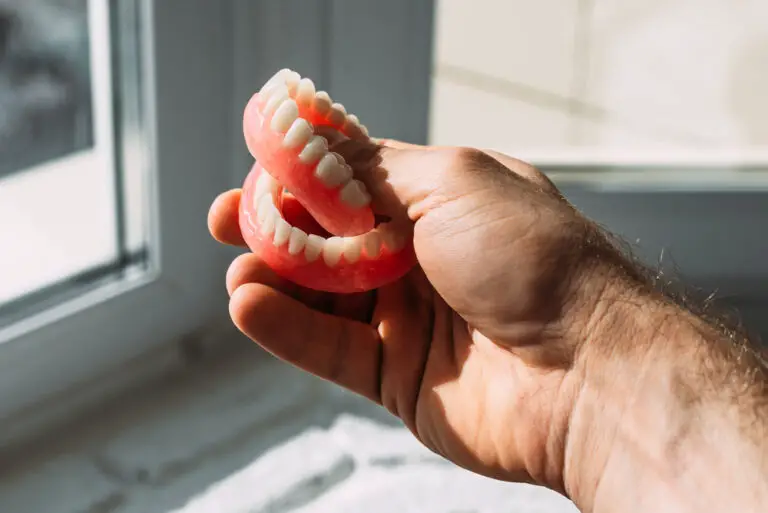A tooth infection, also known as dental abscess, is a pocket of pus that forms in the tooth or gums as a result of a bacterial infection. If left untreated, the infection can spread from the tooth to the bones and tissues around it. In rare cases, a tooth infection can spread further through the bloodstream and affect other parts of the body, including the brain. This potentially life-threatening condition is called brain abscess and requires emergency medical care.
In this article, we will examine in detail how a tooth infection can spread to the brain, looking closely at the anatomy involved. We’ll discuss the symptoms, diagnosis, and treatment of a brain abscess resulting from dental infection. We’ll also provide an in-depth overview of ways to prevent tooth infections from occurring and spreading in the first place.
How Can a Tooth Infection Spread to the Brain?
There are a few ways a tooth infection can spread from the mouth and eventually reach the brain. Let’s look at the anatomy involved:
Through the blood vessels
The mouth contains abundant blood vessels that supply the teeth, gums, tongue, and other oral structures with oxygen and nutrients. These blood vessels include the maxillary artery supplying the upper jaw and teeth, the lingual artery to the tongue, and branches of the facial and carotid arteries.
All these blood vessels interconnect with the rest of the circulatory system. Bacteria from a dental infection can enter the bloodstream by penetrating the walls of vessels damaged by infection and inflammation. Once in the blood, the microbes can travel through arteries like the carotid, vertebral, and cerebral arteries all the way to the brain. They can then cross the blood-brain barrier or get lodged in small capillaries, seeding infection in the brain tissue.
Through facial planes
The facial planes are intersecting spaces between the muscles and tissues of the face. These provide pathways for infection to spread from the mouth since they connect the oral cavity to the rest of the facial structure.
The most direct facial plane route is from infected upper back teeth through the buccal space, which continues into the infratemporal and pterygomandibular spaces that connect to the base of the skull. Infection can spread through these spaces, reach the cranial cavity housing the brain, and infect the meninges or brain matter.
Through the roots of the teeth
The roots of the upper back molars and premolars are situated very close to the maxillary sinuses and the base of the skull. The maxillary molars’ roots can even project into the sinuses themselves.
An infection spreading from these upper back tooth roots can directly penetrate the thin sinus walls or the bones of the skull. This allows quick access into the cranial vault containing the brain. Infection starting in the lower wisdom teeth can similarly spread into the jaw bones and cranial cavity.
Symptoms of a Brain Abscess from Tooth Infection

The symptoms of a brain abscess arising from a dental infection usually develop slowly over several days or weeks. As the abscess grows within the brain tissue, it starts to cause neurological deficits. Symptoms may include:
- Severe, persistent headache on one side of the head – This is due to swelling and inflammation around the abscess putting pressure on pain-sensitive structures. The headache gets progressively worse over time.
- Nausea and vomiting – Buildup of pressure inside the skull irritates the brain’s vomiting center, causing nausea.
- Confusion and memory loss – The abscess disrupts normal brain function, impairing cognition.
- Seizures – Pressure and inflammation around the abscess can trigger seizure activity.
- Weakness or numbness on one side of the body (hemiparesis) – The abscess prevents proper signals from being conducted through the motor cortex.
- Difficulty speaking (aphasia) – Language function controlled by the temporal lobe can be affected.
- Blurred or double vision (diplopia) – Abscess pressure damages parts of the brain dealing with visual processing and eye movements.
- Loss of balance and coordination – The cerebellum, which controls coordination, may be impacted.
- Fever – Presence of widespread infection stimulates a fever response.
- Stiff neck (nuchal rigidity) – Meningeal irritation creates neck stiffness.
These are serious symptoms indicating infection has reached the brain. Any recent tooth infections combined with neurological symptoms demand prompt medical evaluation to test for a brain abscess.
Diagnosis of Brain Abscess from Dental Infection
If a brain abscess is suspected based on symptoms after a tooth infection, the doctor will order imaging tests and lab work to confirm the diagnosis. Here are the main diagnostic approaches:
Imaging tests
- CT or MRI scans: CT or MRI allows direct visualization of the brain tissue. These scans can detect even small abscesses deep in the brain and pinpoint their exact location. MRI provides clearer images of brain structures and is more sensitive than CT for identifying tiny abscesses.
- Angiogram: This test involves injecting radiopaque dye into the carotid and vertebral arteries that supply the brain. X-rays or CT angiography then show any abnormalities in these arteries indicating spread of infection. If there is an abscess, the dye will show distorted blood flow around it.
Lab tests
- Complete blood count (CBC): This typically shows elevated white blood cell count with a left shift towards more immature neutrophils and band forms, signalling an active bacterial infection.
- Blood cultures: Blood is incubated to grow and identify the exact bacteria causing infection. The microbes most often causing brain abscesses are Streptococcus, Staphylococcus, and certain anaerobes found in the oral cavity.
- C-reactive protein (CRP): This inflammatory marker is elevated due to extensive infection.
- Erythrocyte sedimentation rate (ESR): This nonspecific test reflects high inflammation levels.
Lumbar puncture
A lumbar puncture to obtain cerebrospinal fluid (CSF) often provides confirmation of the abscess. CSF analysis shows:
- Increased white blood cells, especially neutrophils
- Decreased glucose levels
- Increased protein levels
- Positive gram stain and culture showing bacteria
Dental exam
A thorough dental exam identifies any dental infections or abscesses that could be the origin point of the infection spreading to the brain. Signs looked for are swelling over the jaws, gum redness or pus, loose teeth, mouth ulcers, etc. Probing during the exam also checks for deep tooth decay penetrating to the pulp cavity.
Treatment for Brain Abscess Arising from Dental Infection

Treating a brain abscess quickly is vital to save the patient’s life and preserve brain tissue. It involves both general treatments and targeting the original tooth infection source:
Medications
- Intravenous antibiotics: Broad spectrum antibiotics that penetrate the blood-brain barrier like ceftriaxone, metronidazole, and vancomycin are given for 4-8 weeks to kill the bacteria inside the abscess pocket. Shorter treatment risks abscess recurrence.
- Corticosteroids like dexamethasone: These are administered simultaneously to decrease inflammation and vasogenic edema around the abscess. This reduces intracranial pressure and prevents additional brain damage.
- Anticonvulsants: Drugs like levetiracetam help prevent further seizure activity during treatment.
Surgery
- Abscess drainage: If the abscess does not shrink adequately after a 2-3 week antibiotic trial, neurosurgeons will surgically open and drain the abscess contents to immediately relieve intracranial pressure.
- Craniotomy: Removing infected bone is needed if the infection has penetrated into the cranial bones and meninges.
Addressing the dental source
- Tooth extraction: Any infected teeth acting as the bacterial source are extracted. This could involve wisdom teeth, necrotic teeth with deep decay and pulp exposure, or teeth with heavy periodontal disease. Removing the originating infection is crucial.
- Root canal therapy: Endodontic treatment can salvage teeth with deep infections confined to the root canals. The canals are thoroughly debrided and disinfected before sealing.
Follow up care after hospitalization involves continued oral and intravenous antibiotics for several more weeks along with regular brain scans to confirm the abscess is continuing to resolve. Neurological and cognitive function also needs monitoring to ensure the patient isn’t left with permanent deficits.
Preventing Spread of Dental Infections

Preventing dental infections is key to avoid abscesses spreading to the brain, since treatment of brain abscesses can be challenging. Here are important prevention strategies:
Excellent oral hygiene
- Brushing thoroughly twice a day
- Daily flossing down to the gum line to remove plaque
- Using antiseptic mouthwashes to reduce oral bacteria – chlorhexidine and Listerine are examples
- Limiting sugary or acidic foods/drinks that damage enamel
Professional cleanings & exams every 6 months
Regular dental cleanings allow early detection and treatment of issues like gingivitis, small cavities, and periodontal disease before they worsen. Any problems found on exam like cracked teeth or suspicious lesions can also be addressed promptly.
Crowns to protect teeth with existing decay
Crowns fully cover weakened teeth prone to decay and prevent further infection of the inner pulp. This also helps preserve the tooth instead of ultimately requiring extraction.
Fillings for small cavities
Small decayed areas on tooth surfaces should be promptly filled before they deepen towards the pulp. Amalgam and composite fillings prevent food and bacteria from entering open crevices.
Root canals for infected pulps
Root canals remove infection from inside teeth. The pulp tissue is removed and disinfected before the root canal system is sealed with filling material. This saves teeth that would otherwise require extraction.
Conclusion
While rare, a tooth infection can spread to the brain and lead to a life-threatening brain abscess requiring emergency treatment. Infection reaches the brain via blood vessels, facial planes, and tooth roots. Symptoms include headache, mental changes, seizures, and neurological deficits. Diagnosis involves CT/MRI scans, blood work, lumbar puncture, and dental exam. Treatment requires high-dose IV antibiotics, steroids, abscess drainage, removing infected teeth, and sometimes craniotomy. Practicing excellent regular dental care and promptly treating any tooth infections can help prevent this serious complication.
Frequently Asked Questions
Can a tooth infection reach the brain?
Yes, it is possible for a tooth infection to spread from the mouth and eventually reach the brain in rare cases. The infection can travel through blood vessels, facial planes, or tooth roots and lead to a brain abscess. Prompt dental treatment is crucial to avoid this dangerous complication.
What are the early signs of a brain abscess?
Early signs of a brain abscess may include persistent headache, nausea and vomiting, low-grade fever, irritability or mood changes, and sensitivity to light. Seeking medical care for any of these symptoms along with a known tooth infection can lead to early diagnosis and prevent the abscess from worsening.
How do doctors test for a brain abscess?
Doctors use CT or MRI brain scans to visualize any abscesses in the brain tissue. A lumbar puncture to obtain cerebrospinal fluid, blood tests, and a dental exam to find the infection source are also typically done when diagnosing a suspected brain abscess.
How is a brain abscess treated?
Treatment involves high-dose IV antibiotics given for weeks to months to kill the bacteria causing infection. Steroids help reduce swelling and inflammation. Surgery to drain the abscess may be necessary if it does not shrink sufficiently with antibiotics alone. Removing infected teeth prevents further spread.
Are brain abscesses always fatal?
With early diagnosis and prompt treatment including antibiotics, steroids, and surgery, many patients survive brain abscesses. However, it can be fatal in some cases even with treatment. That is why urgent medical care is so important when any signs or symptoms occur after a tooth infection.






